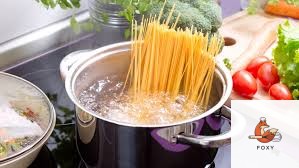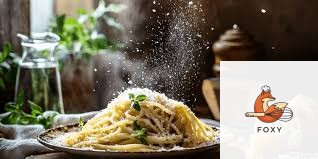Forget everything you think you know about carbonara. This isn’t your average creamy pasta dish; this is a journey to the heart of Roman cuisine, a celebration of simple, high-quality ingredients, and a testament to the power of perfect execution.
We’re diving deep into the history, techniques, and the ultimate satisfaction of preparing authentic Roman carbonara —a dish so rich and satisfying that it’s sure to become a new family favourite.
What is Carbonara? A Taste of Roman History
Roman carbonara is a deceptively simple pasta dish, yet its history is rich and complex, with debate surrounding its origins. Unlike the cream-laden versions often found outside of Italy, true Roman carbonara relies on the emulsification of egg yolks, pecorino romano cheese, guanciale (cured pork jowl), and black pepper for its creamy texture.
It’s a dish that speaks to the region’s culinary heritage, showcasing the beauty of fresh, high-quality ingredients used to their fullest potential.
The story goes that it originated in the early 20th century and was influenced by the soldiers stationed in Rome during World War II, but exactly how it came to be remains a culinary mystery, adding to its allure.
Pro Tips for Perfect Carbonara
- Use the right guanciale: Guanciale is key to the dish’s rich flavor. Avoid pancetta or bacon – they simply won’t offer the same depth of flavor.
- Don’t overcook the pasta: Cook the pasta al dente, slightly firm to the bite. This is crucial for the pasta to maintain its texture after being tossed in the sauce.
- Work quickly: Once the pasta is cooked, the sauce comes together rapidly. Have everything prepped and ready to go to prevent the eggs from scrambling.
- Use the pasta’s cooking water: A little bit of starchy pasta water helps emulsify the sauce and creates a luxuriously creamy consistency.
- Grate your cheese: Freshly grated Pecorino Romano cheese is superior to pre-grated. It melts more smoothly and releases its full aroma.
What to Serve With Carbonara
- A crisp, dry white wine like Pinot Grigio or Vermentino.
- A simple green salad with a light vinaigrette.
- Garlic bread to soak up any extra delicious sauce.
- A small side of sauteed broccolini or asparagus.
Ingredient Substitutes
While adhering to the traditional recipe is recommended for an authentic experience, there are a few substitutions you can make:
- Guanciale substitute: Pancetta or even thick-cut bacon can be used in a pinch, but bear in mind the flavour will be different.
- Pecorino Romano substitute: Parmesan cheese can be a partial substitute, but it won’t have the same sharp, salty bite.
- Egg substitute: While not recommended, if you are allergic to eggs, you could try using a plant-based egg replacement, but this will impact the texture and flavour of your carbonara.
Final Thoughts
Authentic Roman carbonara is a masterpiece of simplicity. With a few high-quality ingredients and careful technique, you can recreate this iconic dish in your own kitchen. Embrace the challenge, savor the process, and enjoy the incredible result – a plate of pure pasta perfection.
Ingredients
- 8 ounces spaghetti
- 3 ounces guanciale, diced
- 2 large egg yolks
- 1/2 cup freshly grated Pecorino Romano cheese
- Freshly ground black pepper
Instructions
-
Cook the Pasta
Cook spaghetti according to package directions until al dente. Reserve about 1/2 cup of pasta water before draining.

-
Cook the Guanciale
Cook the guanciale in a large skillet over medium heat until crispy. Remove the guanciale from the skillet, leaving the rendered fat in the pan.
-
Whisk the Eggs and Cheese
In a bowl, whisk together the egg yolks, Pecorino Romano cheese, and a generous amount of black pepper.
-
Combine Everything
Add the drained pasta to the skillet with the rendered guanciale fat. Add a few tablespoons of the reserved pasta water, then immediately add the egg yolk mixture, tossing constantly until the sauce is creamy and coats the pasta. Add the crispy guanciale and serve immediately.
Nutrition Facts
- Calories: 600-700
- Fat: 40-50g
- Protein: 25-30g
- Carbohydrates: 40-50g
Recipe Video
Frequently Asked Questions
Spaghetti is traditional, but you can also use other long pasta shapes like bucatini or linguine.
The creaminess comes from the emulsification of the egg yolks, cheese, and pasta water. Work quickly and use the heat from the pasta to gently cook the eggs.
It's best served immediately, as the pasta can become soggy if it sits for too long.
Freshly ground black pepper is essential. Don't skimp on the amount!

